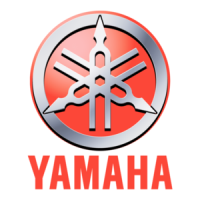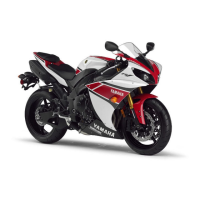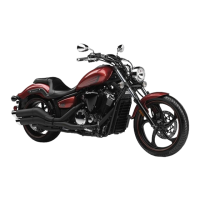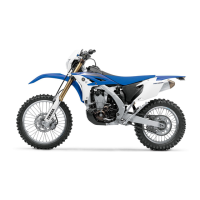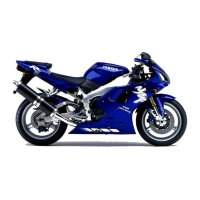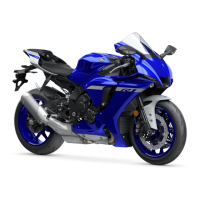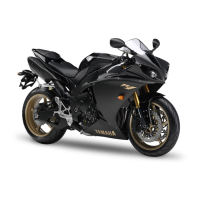THROTTLE BODIES
7-18
c. Close the valve on the injector pressure
adapter.
d. Apply air pressure with the air compressor.
e. Open the valve on the injector pressure
adapter until the specified pressure is
reached.
ECA14B1037
Never exceed the specified air pressure or
damage could occur.
f. Close the valve on the injector pressure
adapter.
g. Check that the specified air pressure is
held at least one minute.
Pressure drops → Check the pressure
gauge and adapter.
Check the seals and O-rings and then rein-
stall.
Out of specification → Replace the fuel
injectors.
▲▲▲▲▲▲▲▲▲▲▲▲▲▲▲▲▲▲▲▲▲▲▲▲▲▲▲▲▲▲
EAS14B1071
CHECKING THE FUEL LINE PRESSURE
1. Check:
• Fuel line pressure
▼▼▼▼▼▼▼▼▼▼▼▼▼▼▼▼▼▼▼▼▼▼▼▼▼▼▼▼▼▼
a. Remove the fuel tank bolt and holdup the
fuel tank.
b. Disconnect the fuel hose “1” from the fuel
tank.
EWA14B1001
Cover fuel hose connections with a cloth
when disconnecting them. Residual pres-
sure in the fuel lines could cause fuel to
spurt out when removing the hoses.
ECA14B1003
Be sure to disconnect the fuel hose by
hand. Do not forcefully disconnect the hose
with tools.
c. Connect the pressure gauge “2” and fuel
pressure adapter “3” to the fuel hose “1”.
d. Start the engine.
e. Measure the fuel line pressure.
Faulty → Replace the fuel pump.
▲▲▲▲▲▲▲▲▲▲▲▲▲▲▲▲▲▲▲▲▲▲▲▲▲▲▲▲▲▲
Pressure gauge
90890-03153
YU-03153
Fuel injector pressure adapter
90890-03210
YU-03210
Specific air pressure:
490 kPa (5.0 kgf/cm
2
, 71.1 psi)
Pressure gauge
90890-03153
YU-03153
Fuel pressure adapter
90890-03176
YM-03176
Fuel line pressure (at idle)
300.0–390.0 kPa (3.00–3.90
kgf/cm
2
, 43.5–56.6 psi)
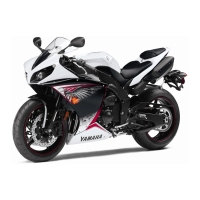
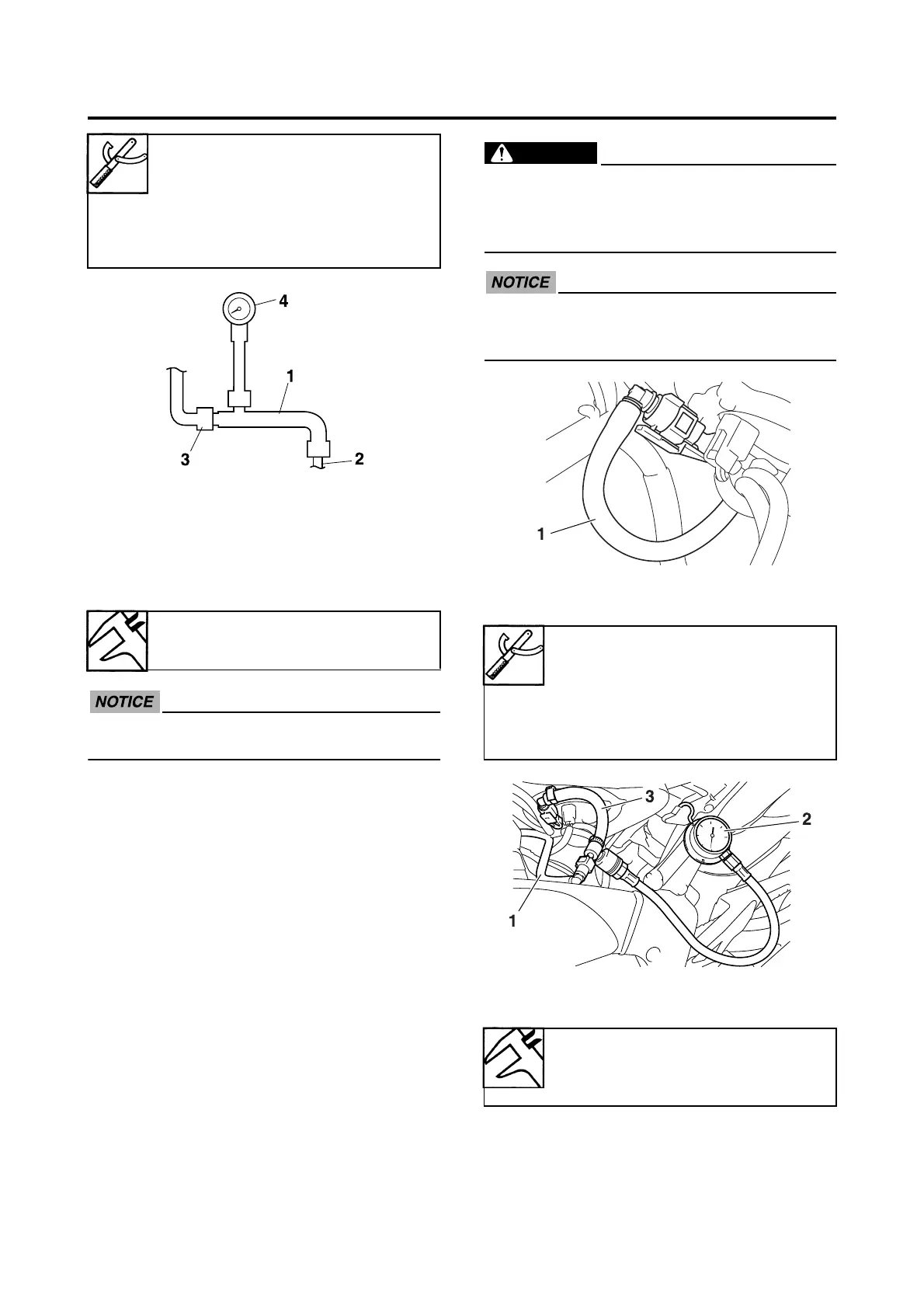